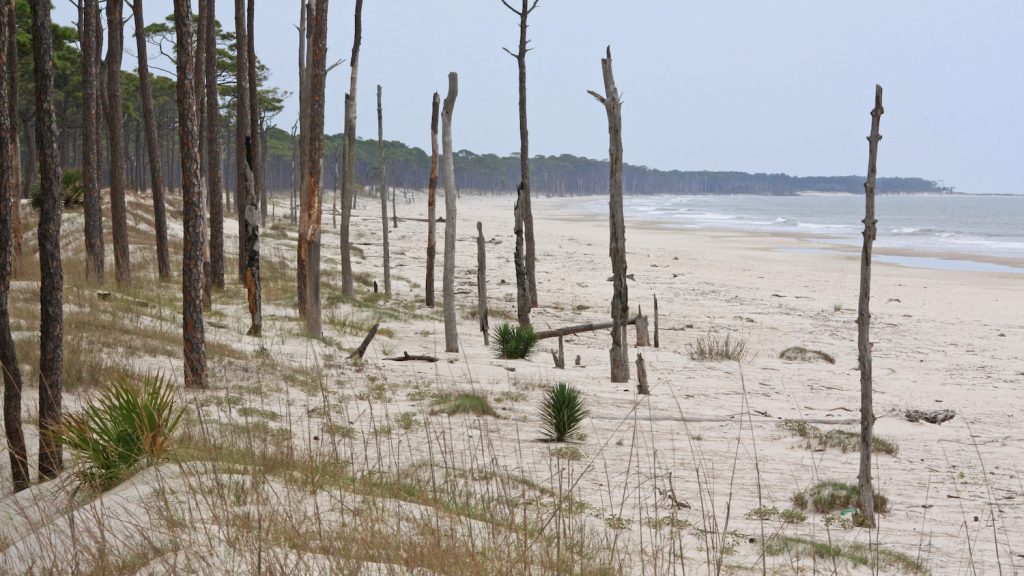Understanding Conservation Management Decisions in the Face of Sea-Level Rise Along the U.S. Atlantic Coast

Principal Investigator(s): Damian Shea, North Carolina State University; Fred Johnson, Research Wildlife Biologist, Southeast Ecological Science Center, USGS; and Mitch Eaton, Research Ecologist, SE Climate Science Center
Project Completion: September 2014. Phase I has now been completed. Phase II is now known as Climate Change Adaptation for Coastal National Wildlife Refuges.
Implements Science Theme: 2, 4 & 5
Overview
Coastal ecosystems in the eastern U.S. have been severely altered by processes associated with human development, including drainage of wetlands, changes in hydrology, land clearing, agricultural and forestry activity, and the construction of structures that “harden” the coast. Sea-level rise and the changing frequency of extreme events associated with climate change are now further degrading the capacity of those ecological and social systems to remain resilient. As custodians of ecological goods and services valued by society, coastal National Wildlife Refuges (NWRs) have an especially important role to play in helping socio-ecological systems adapt to global-change processes. To help refuges address this challenge, we articulated a two-track decision problem faced by coastal refuge managers. The first track focuses on efficient allocation of limited staff time and budgets for management of existing programs under the current refuge design. The second track recognizes the negative impacts of global-change processes on the ability to maintain societal values derived from the existing refuge configuration. Over the long term, refuge managers must decide when and where to acquire or protect new land/habitat to supplement or replace the existing refuge footprint to sustain values as the system evolves over time. Each track suggests a unique set of alternatives to represent differences in the identity of the decision maker(s) and in the spatial, temporal and governance scales of the decision problem. At a June 2014 workshop at the National Conservation Training Center (NCTC), we developed a prototype decision structure by describing how a hierarchical set of objectives and alternative actions can be used to explore the tradeoffs inherent in making short and long-term adaptation decisions. The prototype attempts to characterize a balance between decisions within the purview of the refuge itself and decisions made at higher organizational levels concerning reconfiguration of the refuge, which may be required to ensure the long-term persistence of societal values.
